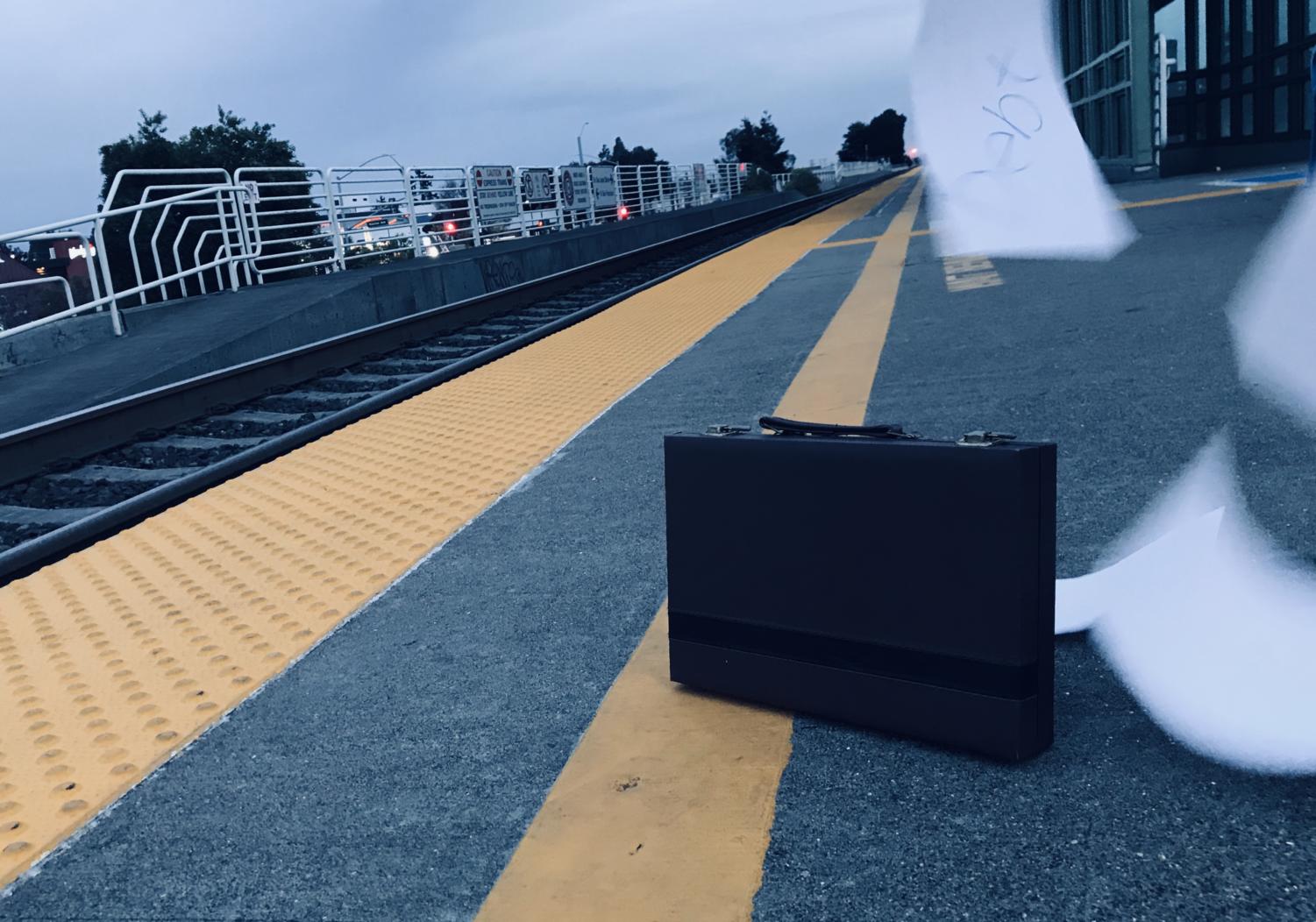Late nights. Early mornings. Slow commutes. Long hours. Scornful students.
Teachers put up with this, and more, for half the average wage of a tech worker in Silicon Valley.
This is the reality of being a teacher.
Every day, teachers struggle with the consequences of their job. The salary of a teacher has been known to be very low, affecting how they live their life outside of school. A teacher’s average salary has only increased 15% since 1960, about 60 years. The salary has not been able to keep up with the time commitments a teacher must maintain.
“There are really difficult days. But knowing that I could be the teacher who changes a student’s life makes it all worth it,” said Anna Wheeler, a teacher from Texas.
As soon as they get out of college, aspiring teachers find themselves in debt and having to pay off student loans, as do a majority of students regardless of their major. The Institute For College Access and Success says about 70 percent of college graduates have a loan debt of $30,100.
On top of student loans, as they go into teaching jobs, many educators deal with the harsh reality of low salaries, contributing to their financial struggles. The National Education Association reports that 20 percent of teachers leave their profession due to little pay as the average teacher salary in California is $78,711 and $58,950 in the U.S.
A major factor in teachers’ low salaries is inflation.
“Given the inflated cost of living in the area in which I work, my income limits what I can choose to do beyond school,” said Sheila Woods, an English teacher from Ralston Middle School. “Since I was not a teacher when I bought my home and because I am not a young teacher, my home costs are more manageable than they would be if I were newer to teaching. However, the cost of mortgages, property taxes, and home maintenance, eats up a large portion of my income. As a result, I am limited in the luxuries I can afford beyond school.”
To some teachers, their income doesn’t necessarily affect their life outside of school but plays a major role in the materials and effort put into the classroom
“In Texas, I make around $3,800 a month. In Oklahoma, I made about $1,800 a month. I am really lucky to not have any loans or debt to pay off because if I did, I would struggle financially. However, I spend about $100 to $300 a month on school-related expenses, whether it be books for lessons, books for my students, or supplies. At this point, I have become accustomed to accounting for this expense,” Wheeler said.
Salary greatly affects the living situation of most teachers. Many live far away from the schools where they teach, leading to long commutes to and from work. According to the Bureau of Labor Statistics, prices in the Bay Area have inflated 4.4 percent since last year, 0.7 percent over the past two months.
A teacher’s salary also contributes to the challenge of finding a living situation in the Belmont and San Carlos area that’s affordable and close enough to work.
“I do not live in this community. I have eight people living with me, including three grandparents. So, the hardest thing is adjusting my schedule and still being able to spend time with family,” said David Heck, a Carlmont P.E. teacher.
David Talcott, a physics teacher at Carlmont, experiences this difficulty with his five-hour work commute each day.
“As a teacher living in the Bay Area, the salary doesn’t keep up well with the cost of living. That explains why I do the commute. It’s because the pay in Belmont is about 50 percent more than the pay would be where I live. It’s definitely a huge part of not only my income but, my work life balance because the commute just takes so much time,” Talcott said. “So it’s about a two-hour commute from start to finish.”
The long commute teachers experience increases the number of hours they work each day. EdTech Magazine says most teachers work an average of 12 to 16 hours a day.
“The commute certainly isn’t easy. I don’t live far away, but it takes longer and longer to get to school and home each year. It means I get to work earlier and stay later,” said Susie Chloe, an English teacher from Menlo-Atherton High School.
Between an unfavorable salary and a daunting commute, a teacher’s time schedule isn’t always ideal.
“[Commute and salary] affects my work mostly in negative ways. I don’t always get my grading done on time and I’m usually very tired because the shortest days I have are 14 hour days. Just the negative effects of that work-life balance make me tired all the time. When I’m doing activities like Robotics, which require time outside of school and Back-to-School-Night-type events, I’m getting home at midnight and waking up at 4 o’clock in the morning. Those aren’t my best days,” Talcott said.
Such difficulties are apparent between the different types of schools such as private and public.
“I did not have the same degree of structure at the private school where I taught, nor the equity. I am enjoying the public school,” Woods said. “Most of my teaching career was spent in the small town where I live. The hardest thing about that was finding it difficult to never fully separate from work and the people of work. Yet, the plus side was a really strong connection to my work through people. So there was pros and cons to that situation.”
Similarly, the challenges of teaching in other states are evident in salary, commute, and time.
“One huge difference between teaching in Oklahoma and Texas is the funding. The district I teach in now has significantly more resources than the district I taught in while I was in Oklahoma. However, the school I work at now has a less supportive school community than my previous school. Parents are a lot less involved and it makes a big difference,” Wheeler said.
Changes such as these not only affect the teacher but the people around them. More specifically, their children.
“Not being able to see [my son] is frustrating, especially when I’m doing Robotics, which, during the third quarter from January to April, is basically a complete job. I don’t see him that much and it really sucks,” Talcott said.
However, to some teachers, the opportunity to have their child close to them while teaching is possible. Daycares such as Happy Campers offer care and education for 2 to 5-year-olds of Carlmont teachers.
“We offer a curriculum. It’s a basic preschool curriculum called Sunshine Express. We also offer childcare for infants and toddlers here. Teachers normally get it at a discount rate of 30 percent. If you’re part of the union, we offer subsidized child care,” said Heather Chisholm, an employee of Happy Campers.
Along with childcare, programs relieving teachers’ debt were created. Loan forgiveness programs were implemented such as Public Service Loan Forgiveness (PSLF) from the Federal Student Aid and the Perkins Loan Cancellation and Discharge.
According to Federal Student Aid, if one teaches full time over a period of five years in a low-income school, they may be eligible for “forgiveness” up to $17,500.
Inconsistency is a factor included in the job of a teacher. From students to parts of the curriculum, teachers will not encounter a job without change. Some try to look at this as a positive.
“I deal with regular changes by communicating with other teachers going through them with me, then I just do it. If I think about change, it makes it harder than just adapting, so I try to adapt as best I can and seek help when I find it hard. That’s the best way to get through life. As for new students each year, I find it a new adventure and a fresh start,” Woods said.
The life of a teacher comes with difficulties and struggles, but despite this, they continue to look at the positive side: why they began teaching in the first place.
Teachers find the outcome of educating is all worth it if they get a chance to help shape the future of young people’s lives.
“The main thing that that drives me to teach through the hard times is the relationship I get to build with each and every student. Knowing that I have the opportunity to make an impact on 65 plus students every single day is unbeatable,” Wheeler said.
Through all the struggles of salary, commute, rough time schedules, and debt, teachers find their purpose is more than to just educate. They continue to strive every day to achieve their goals of teaching by making a difference.
“I didn’t want to spend the next 45 years of my life not making a difference in people’s lives,” Talcott said.




